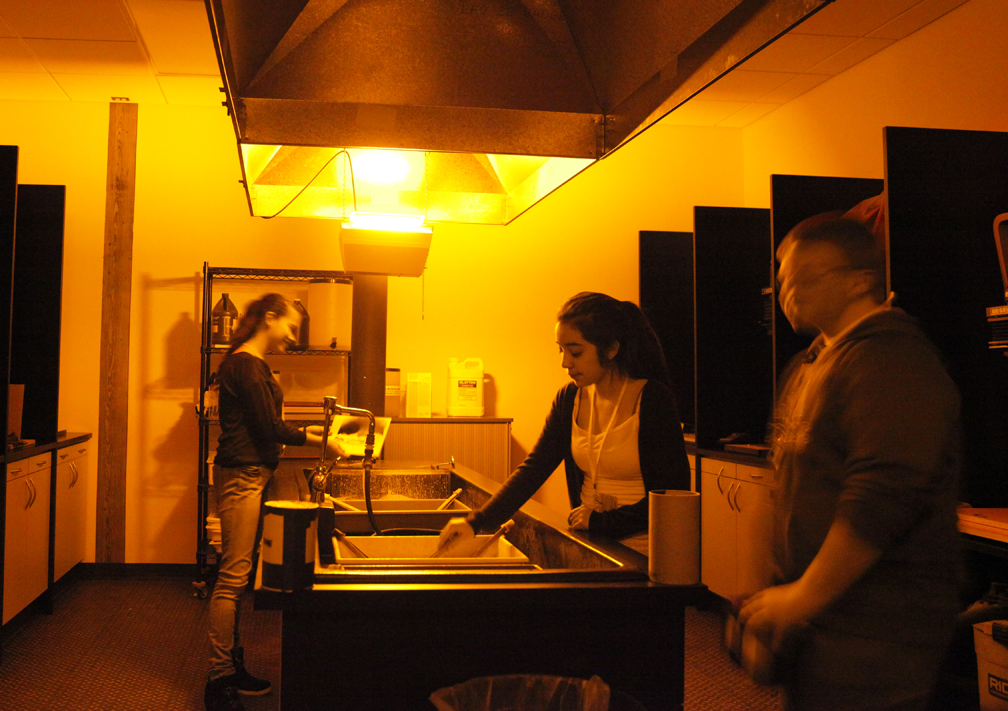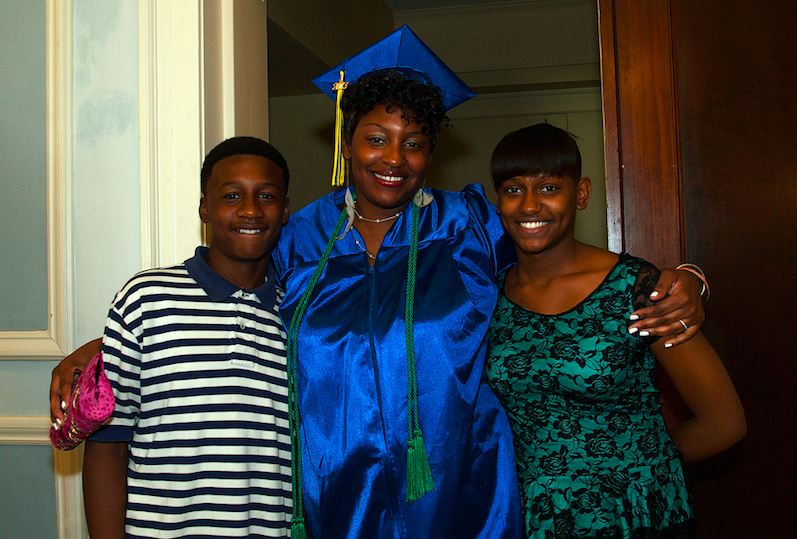The following appeared in ArtsBlog by Americans for the Arts in March 2014. Kim Dabbs, WMCAT executive director, joined leaders nationwide in shedding a light on new and innovative means for strengthening arts education and advocating for a more creative learning environment.
Take Action!
This was the mantra I was given during my time at the famed d.school at Stanford and it has stuck with me as we began the process of redesigning a pedagogy for an entire organization.
The West Michigan Center for Arts and Technology (WMCAT), located in Grand Rapids, Michigan, is taking the fundamentals of design thinking outside of traditional school classrooms and piloting a best practice of infusing an after school arts and tech program with this innovative method of teaching and teen engagement. Under this model WMCAT teen students are working in cohorts to explore and tackle a pressing community issue using arts and technology as a basis for inquiry, critical thinking and practical application. We are serving 144 teens from Grand Rapids Public Schools on 12 design teams that are each connected to a local community partner. It is arts education through a 21st Century skill development lens. This is the exciting, innovative and proven world of project-based learning where students learn through exploring real-world challenges and issues. It is grounded in student experience and driven by student interest.
The 12 teams and their partners are:
• Graphic Design (2 teams): partnering with West Michigan Environmental Action Council and Humane Society of West Michigan
• Photography (2 teams): partnering with Downtown Grand Rapids Inc. and Blandford Nature Center
• Video Production (2 teams): partnering with LaughFest and Dwelling Place
• Illustration and Painting (2 teams): partnering with Friends of Grand Rapids Parks and Dwelling Place
• Fashion Design (2 teams): partnering with Family Promise and Blandford Nature Center
• 3D and Game Design (1 team): partnering with Friends of Grand Rapids Parks
• App Design (1 team): partnering with Downtown Grand Rapids Inc.
Professional teaching artists and technology gurus, who are trained in youth development best practices guide these teams and serve as mentors to our students. By giving our teens an opportunity to work on a design team for the entire school year, we are increasing their connections and engagement with their peers and teaching artist.
So, how do we pick the projects the teens will complete? We don’t. The teens themselves are engaged in the Human Centered Design process where they are following the design thinking sequential method of discovery and empathy; ideation; prototyping; and production. We began our program in September and to prepare them for this process, we held a teen retreat in September where all the students engaged in rapid prototyping to immerse them in active learning. Now, throughout the year, taking action is what they continue to do!
Why design thinking? WMCAT was quite successful in engaging urban teens for eight school years by offering classes in skateboard design, fiber arts, photography, screen printing, and illustration. We consistently served 150 kids a year. Teens and their parents loved us. We were the cool place to hang out, create and express views without judgment. But then we started to look at retention and graduation rates from our teens. While our graduation rates were significantly higher than the local districts and the state, we knew we could do better and really move that needle toward academic success, high school graduation and post-high school goals. Over two years we partnered with the National Institute on Out-of-School Time (NIOST) to evaluate our program and research best practices. Their recommendation was that the best way to grow our program was through increased engagement with a smaller group of students, rather than increasing the number of teens coming through our doors. Our team was on a mission to develop a new pedagogy that would increase civic engagement, strengthen our curriculum, attract and retain students, and help us achieve outcomes related to high school and post-graduation success.
Design Thinking and project based learning surfaced as an essential model in innovative school redesign that improves students’ attitudes toward learning (2009 study from Interdisciplinary Journal of Problem-Based Learning and Edutopia funded by George Lucas Educational Foundation). And one of the stars in project-based learning was High Tech High (HTH) in San Diego. The WMCAT Teen Arts team traveled to HTH to complete a residency with their staff on the merits, metrics and ins-and-outs of project-based learning. We had the opportunity to tour their classrooms, meet students and attend an elementary school art show that was outstanding! Our team of teaching artists prototyped, created and shared new ideas. We were motivated! Back in Grand Rapids we also selected a team to complete a course in Human Centered Design for Social Innovation from IDEO and Acumen.
Our attendance and retention rates are high, our teaching artists love the new things they are trying and the way students are shaping their own projects, and our kids are building a real community, their community. Each night they are here at WMCAT we offer a family-style dinner (a partnership with our local YMCA) and open studio time. We host our Teen Art + Tech Exhibits, the first chance for our students to show their progress of their projects, their ideas and prototypes to family and friends. We can’t wait to see how they are tackling animal welfare, the environment, neighborhood development, homelessness, cancer support, and city park preservation through arts and technology engagement.
Our teens continue to Take Action while changing the world (VIDEO)



